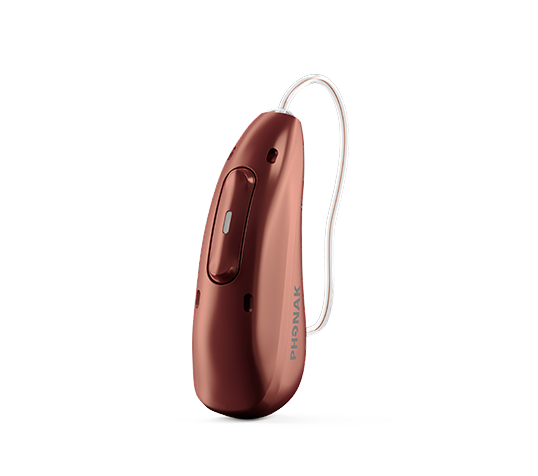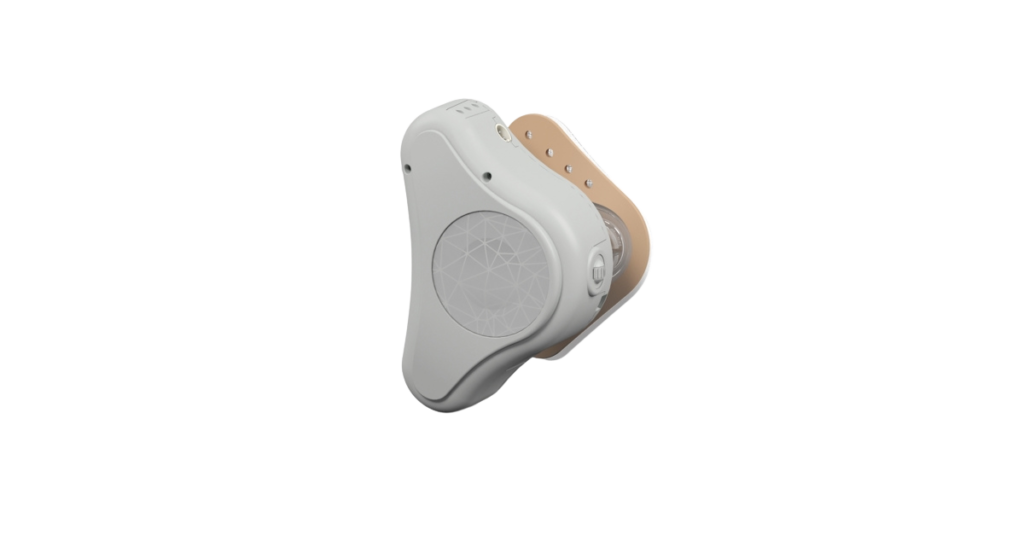What is Single-Sided Deafness (SSD) and what treatments are available?
Single-sided deafness (SSD) is a condition where a person experiences normal hearing in one ear and partial or complete hearing loss in the other ear. This condition can significantly impact a person’s ability to localise sounds, participate in conversations, and navigate environments.
While SSD has historically been a challenging condition to manage, advancements in non-invasive treatments like CROS hearing aids and Medel’s AdHear bone conduction system have been demonstrated to be effective solutions for this condition.

What is Single-Sided Deafness (SSD)?
Single-sided deafness (SSD) occurs when one ear has normal hearing and the other ear experiences profound hearing loss or a completely dead ear. The causes of SSD vary, including:
- Sudden Sensorineural Hearing Loss (SSNHL)
- Trauma or Injury
- Congenital Conditions
- Infections
- Lesions (e.g., Acoustic Neuroma)
- People with SSD may experience challenges such as difficulty hearing from one side, trouble understanding speech in noisy environments, and problems with sound localisation. This can lead to frustration and isolation in social or professional settings.
The impact of SSD on daily life
Individuals with SSD often face several challenges:
- Difficulty localising sounds: With hearing in only one ear, it can be hard to determine the direction from which sounds are coming.
- Struggling in conversations: Understanding speech in noisy environments (like restaurants or busy streets) can be more difficult.
- Lack of stereo sound: Normal hearing allows individuals to perceive sounds from both ears (binaural hearing), which helps with depth and clarity. SSD removes this ability, making it harder to distinguish sounds.
- Increased cognitive load: The brain must work harder to understand sounds and speech, leading to mental fatigue.
Non-invasive treatments for SSD
While SSD cannot be fully assisted through the use of traditional hearing aids, non-invasive treatment options like CROS hearing aids and Medel’s AdHear bone conduction system can significantly improve the quality of an individual’s hearing. These devices capture sound from the ear with hearing loss and transmit it to the better ear, which helps mitigate the Head Shadow Effect.
CROS hearing aids
CROS (Contralateral Routing of Signal) hearing aids are specifically designed for individuals with SSD. Here’s how they work:
A CROS system consists of two devices: a microphone (worn on the “dead” ear) and a receiver (worn on the normal hearing ear). The microphone picks up sound from the side with hearing loss and sends it wirelessly to the ear with normal hearing.
Advantages of CROS:
- Sound localisation: The system helps individuals with SSD better locate sounds, since it provides sound input to both ears.
- Improved speech understanding: Conversations become easier to follow, especially in noisy environments, as both ears are now receiving sound.
- Non-invasive: CROS systems are completely external, with no surgery required, making them a safe option for many.
- Adaptability: Many CROS hearing aids can be adjusted to different environments, offering flexibility and ease of use.

Medel’s AdHear Bone Conduction System
AdHear transfers sound from the ear with hearing loss to the healthy ear, improving hearing capabilities. The system consists of an easy-to-apply adhesive adapter and an audio processor that captures surrounding sounds, transmitting them to the inner ear without the need for surgery, making it easier for the brain to process sounds. It’s the only bone conduction device that doesn’t apply pressure to the skin, ensuring comfort throughout the day.
Advantages of Medel’s AdHear:
- Comfortable and discreet: Unlike hearing aids, Medel’s AdHear is worn externally and adheres to the side of the skull, making it discreet and comfortable to wear.
- Natural sound experience: Since the device uses bone conduction, it can provide a more natural listening experience compared to other devices.
- Non-invasive: There is no need for implants or surgery, which makes Medel’s AdHear an appealing option for many patients.
- Easy to use: The device is easy to wear and adjust, and users can even talk on the phone or listen to music with it on. Users simply attach the adhesive adapter behind their ear, click on the audio processor, and start hearing instantly.

Why non-invasive solutions are beneficial for Single-Sided Deafness
No surgery
Both CROS hearing aids and Medel’s AdHear are non-invasive, meaning there’s no need for surgery or implants, making them a low-risk treatment option.
Affordability
Non-invasive solutions tend to be more affordable compared to surgical treatments like cochlear implants.
Ease of use
These devices are designed to be user-friendly, with simple controls and settings that adapt to different environments.
Improved quality of life
By helping users localise sounds and understand speech better, both CROS hearing aids and Medel’s AdHear can improve daily activities, reduce frustration, and enhance social interactions.
Treating SSD with AmpCROS Amplification
The above options do not address any residual hearing that may remain in the affected ear. In some cases of SSD, individuals retain some measurable hearing or a degree of word recognition, and may also experience tinnitus. In such cases, a more beneficial treatment approach could involve stimulating the affected ear while simultaneously transmitting the sound to the better ear. This is where AmpCROS comes in.
What is AmpCROS?
AmpCROS is a treatment strategy where sound is directed to the hearing-impaired ear and simultaneously sent to the better ear. This not only overcomes the Head Shadow Effect but also improves speech understanding and provides tinnitus masking or aided benefit to the affected ear.
There are three key benefits of AmpCROS:
- Binaural Summation: By stimulating both ears at once, it increases the volume perception, enhancing the overall performance of the better ear.
- Tinnitus Reduction: Amplifying sound in a tinnitus-affected ear can help reduce the perception of ringing or buzzing, even in severely impaired ears.
- Cognitive Health: Stimulation of the deaf ear may reduce the risk of cognitive decline associated with hearing loss by providing additional auditory input to the brain.
The AmpCROS is not a specific product, but rather a configuration of hearing aids with a binaural phone feature. Originally designed for transmitting phone calls between hearing aids, this feature can also be used to transmit speech from one aid to the other, allowing sound amplification on the hearing-impaired ear while sending it to the better ear.
If you have some hearing ability in the affected ear and wish to benefit from its stimulation, AmpCROS could be an ideal solution.
Treatment for Single-Sided Deafness
Single-sided deafness (SSD) may be a challenging condition, but thanks to innovations like CROS hearing aids, Medel’s AdHear bone conduction system and the AmpCROS feature, individuals with SSD now have non-invasive options to improve their hearing and overall quality of life. These devices help overcome the challenges of sound localisation and speech understanding, empowering people with SSD to engage more fully in their personal, social, and professional lives.
For those living with SSD, it’s important to consult with an audiologist or hearing specialist to determine the best treatment plan. With the right solution, individuals with SSD can continue to thrive and navigate their world with confidence.
If you or someone you know is struggling with single-sided deafness, explore the options available. Talk to a hearing specialist today at Harley Street Hearing to find the right solution for you.
Enjoy this article? You might be interested in some of our others:












